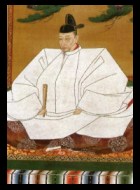

about kwan um do kwang
roots in korean buddhism
origins of the chogye order
the japanese invasion
zen temple arts revived
founding of kwan um do kwang
historical sources
headmaster and instructors
the zen warrior
upcoming and recent events
classes and fees
frequently-asked questions
additional resources
contact us

History of Kwan Um Do Kwang
The Japanese Invasion of Korea
During the 15th and 16th centuries, relatively friendly yet deferential ties with China, Korea's powerful patron-ally, along with internal factional strife among the aristocracy, led to a weakened Korean government and military. In 1592 the armies of Japanese daimyo (warlord) Toyotomi Hideyoshi, invaded Korea, landing in Pusan.
The Japanese samurai, with their superior armament (Japanese swords and Portuguese muskets), swept over the Korean peninsula virtually unchecked. The King and court fled Seoul, retreating as far as the Yalu river on the Korean border with China, leaving the populace to the mercy of the Japanese.
 Hideyoshi unified Japan under the domination of one ruler, signifying an end to Japan's "Warring States" period and Japan's rise as a single cohesive power. The Japanese were trained fighters, men who followed a strict warrior code and whose sword skills were developed over centuries of internecine war. In the case of the Japanese, their sword arts were abetted by martial technology. The Japanese swords crafted in Hideyoshi's time were the finest edged weapons ever made, revered even to this day.
Hideyoshi unified Japan under the domination of one ruler, signifying an end to Japan's "Warring States" period and Japan's rise as a single cohesive power. The Japanese were trained fighters, men who followed a strict warrior code and whose sword skills were developed over centuries of internecine war. In the case of the Japanese, their sword arts were abetted by martial technology. The Japanese swords crafted in Hideyoshi's time were the finest edged weapons ever made, revered even to this day.
The Korean armies were initially defeated by Hideyoshi, a guerilla army of Buddhist monks under the direction of Sosan Daesa and his student Samyong Daesa turned the tide against the Japanese until the late arrival of the Chinese Army. Although there were only 9,000 Buddhist monks, they were effective in stopping 100,000 samurai led Japanese forces soley because they had trained for three decades under the direction of the great Zen master who possessed mystic knowledge foretelling the invasion.
"From that time, Buddhist monks were collectively known as defenders of the nation, playing prominent roles in the defense and martial arts of Korea. Only in Korea were Orthodox Buddhist monks allowed by their religion to actively learn and practice a fighting art."5
After the Japanese invasion, King Sunjo (1567-1608) ordered the writing of the Muye Jebo, or martial arts manual, dedicated primarily to long stick, spear, shield, and sword arts. In 1749 King Youngjo expanded the original 6 fighting arts to 12, renamed the manual the Muye Shinbo (New Illustrated Martial Arts Manual), which included the sword art of wae gum (Japanese sword) and ssang gum (twin swords).
In 1790 King Jungjo commissioned another revision and expansion, which included six additional fighting arts. (Much of the Muye Dobo Tongj survives today, available in an English translation through Turtle Press.) These arts are sometimes known collectively as the Korean Royal Court styles.6
Unlike the Korean Royal Court arts, Korean Buddhist martial arts were taught and preserved behind the closed doors of the temples, handed down through direct transmission from master to student. The secret art of Korean Buddhist wae gum, a synthesis of Japanese sword and Korean temple mysticism, remained hidden for centuries and has only been revealed to the world in modern times.
Because Korean Buddhist sword arts were developed to repel the Japanese at the height of their power (and were further refined during the brutal Manchu invasions of the 17th century), they bear more of a resemblance to the Japanese Koryu Bujutsu sword schools (traditional fighting arts as practiced on the ancient battlefields) than the Korean Royal Court sword arts, which were often patterned on Chinese styles.
Today, Koryu maintains much of its distinctive "battlefield effectiveness" as a traditional military art, and is much different from other Japanese sword arts like kendo and iaido.7 Similarly, Korean Buddhist sword arts also retain much of the tactical utility of the battlefield, with forms that emphasize defense against multiple attackers.
While the Japanese Koryo and Korean Buddhist sword arts existed in antithesis, as two sides of a hostile equation, this also makes them uniquely complementary. The Korean monks studied Japanese styles, not only to emulate them and incorporate techniques, but to develop their own uniquely effective counters. For example, Korean Buddhist one-handed styles, wielding lighter and less resilient swords than the Japanese katana, are designed to deflect and turn a heavy blow and rotate through that deflection into an attack.